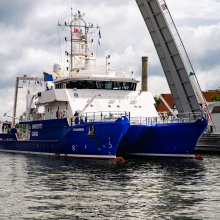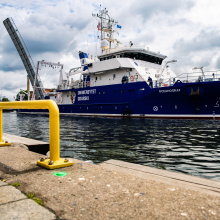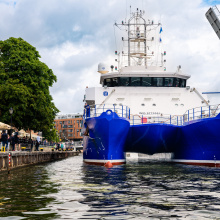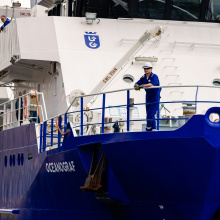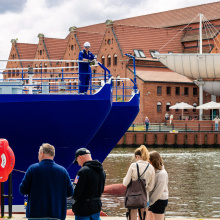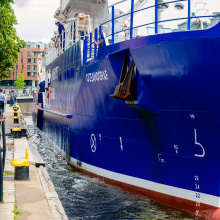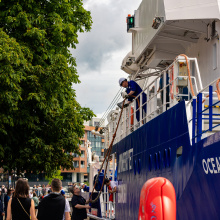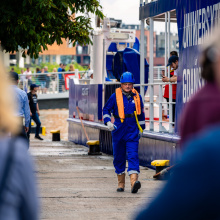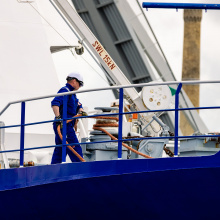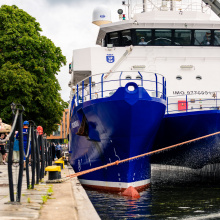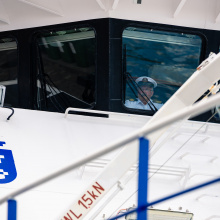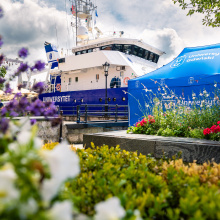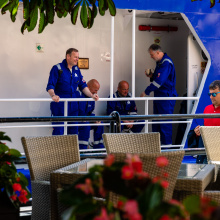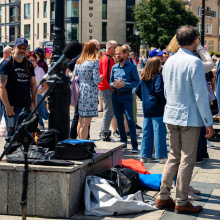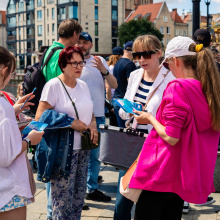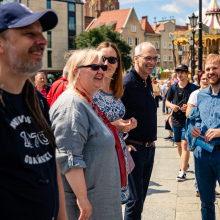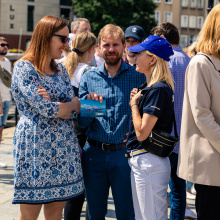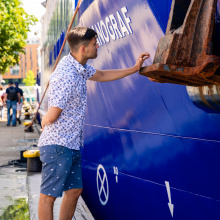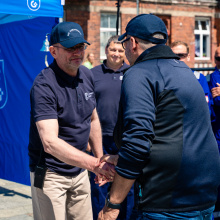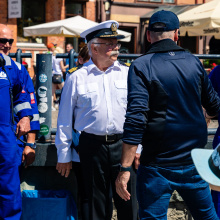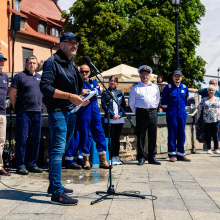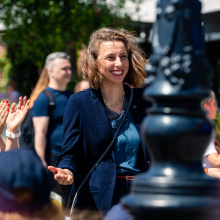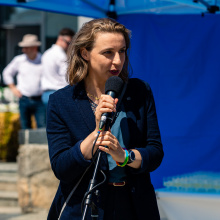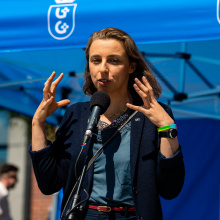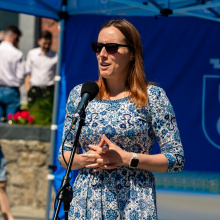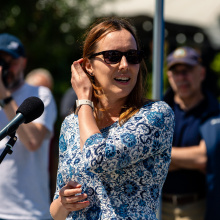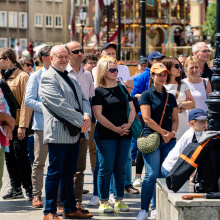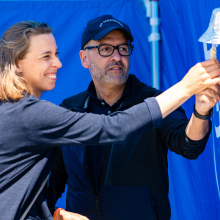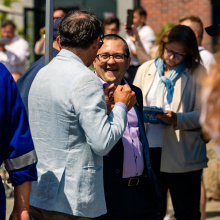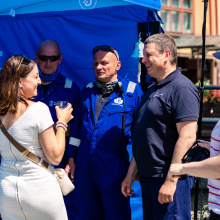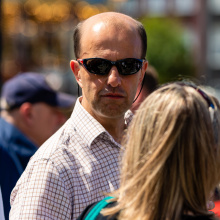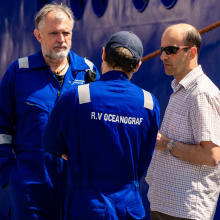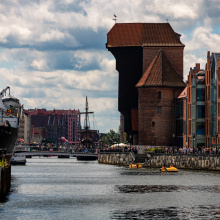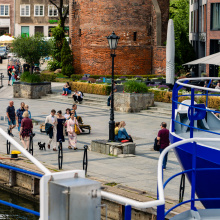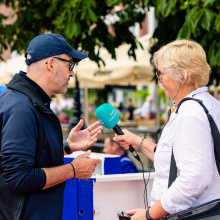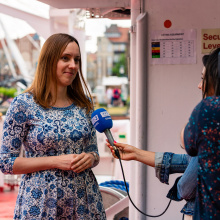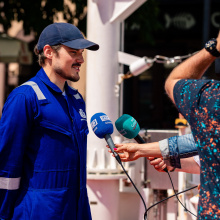The SEA-EU research cruise was a complete success! On the second of July at 11.30 am, the University of Gdańsk ship r/v Oceanograf arrived at the quay at the Fish Market in Gdańsk. It was welcomed on board by the university authorities, the academic community, Monika Chabior, Vice-President of Gdańsk, and a brass band. The ship and the ceremony also attracted the attention of numerous strollers.
- 'The tasks were all completed as far as the weather permitted. The crew is healthy, the ship is whole,' - reported the ship's captain, mgr inż. Andrzej Wawrzyniak.
This is the first expedition of the r/v Oceanograf outside the Baltic Sea. During the voyage, the UG ship entered the Kiel Canal, the North Sea, the English Channel, the Atlantic Ocean and the Bay of Biscay. - 'It is an absolutely incredible moment. After a 4,500-mile extraordinary voyage, here we are today, welcoming our Oceanograf to its home port,' - said UG Rector prof. dr hab. Piotr Stepnowski.
The Rector presented all the advantages of the voyage. From the education of students from SEA-EU universities through the scientific research carried out to the strengthening of ties between European coastal universities. Prof. Piotr Stepnowski then thanked everyone involved in organising the entire project:
- 'The cruise would not have been a success without the hard work of many people. The list is very long, so let me remember all those involved in organising the cruise, the research and the events in the ports where the Oceanograf moored - I will pass on my thanks to their representatives. And so: I would like to thank the crew of the r/v Oceanograf headed by Captain Andrzej Wawrzyniak, the scientific team led by dr Aleksandra Brodecka-Goluch, the coordinator of the scientific committee prof. Adam Sokołowski, the chief hydrographer dr Jakub Idczak, the Dean of the Faculty of Oceanography and Geography prof. Waldemar Surosz, the Director of the Institute of Oceanography prof. Mariusz Sapota and Admiral Jędrzej Czajkowski. I would also like to thank Vice-Chancellor Leszek Fiertek for his commitment to organising technical matters, without which scientists would not be able to carry out research at the Oceanograf,' - said the Rector. - 'However, this group is not limited to our compatriots. As I mentioned, the SEA-EU cruise is the result of international cooperation. So I thank the coordinator of the entire SEA-EU alliance, Fidel Echevarria. In addition, Daniel Gonzales Fernandez from the University of Cadiz, who led one of the research projects, to the scientists from the University of Brest - Jérôme Goslin and Matthieu Waeles, with whom the collaboration on the study of atmospheric pollution will continue more broadly also after the cruise, and to the scientific partners from the University of Kiel, including Jens Schneider, who co-developed the research agenda on hydroacoustic research. During the second leg of the cruise, the research team also included a PhD student from the University of Odessa, Kseniia Andreeva, whom I would also like to thank for her invaluable assistance during the collection of research material.'
The return of the UG research unit has also attracted the attention of the Gdańsk city authorities. - 'It is beautiful when romanticism is combined with science. This is what the world needs now. I am very impressed by what the University of Gdańsk has done,' - said Monika Chabior, Vice-President of Gdańsk.
Also present on shore were UG scientists who collected sediment, water and air samples for three international research projects en route to Spain. - 'We managed to collect more than 90 per cent of the assumed material. This is a huge success considering all the adversities that arose during the voyage. We have hundreds of samples for subsequent biological and chemical studies. In addition, we have collected hundreds of gigabytes of hydroacoustic data,' - dr Aleksandra Brodecka-Goluch, scientific leader of the voyage, summarised the scientific aspect of the voyage.
Prof. Piotr Stepnowski and Vice President Monika Chabior symbolically ended the voyage by ringing the bell together.

